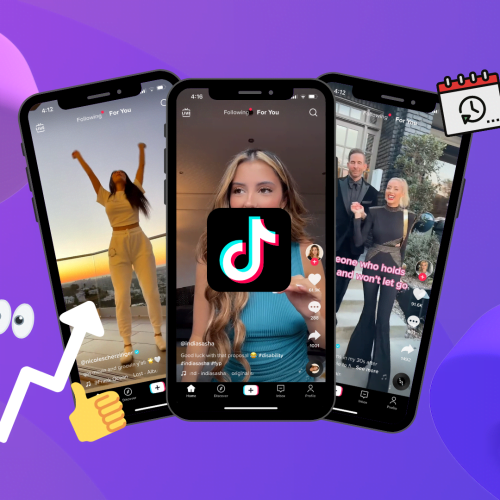
Looking for the latest social media and marketing statistics? Digital marketing stats? Or want to know the latest trends in lead generation? If so, we have some fascinating statistics for you.
You see in every data point hidden below the surface; there is a story. In every statistic lies an opportunity for advanced marketers or business leaders.
By analyzing the statistics below, you will discover what your competitors and the market are doing. When you know what the market is doing, you can identify gaps to accelerate your brand, attract more leads, and increase revenue for your business.
To illustrate this point, I will break down a few statistics for you.
Let’s use conversion rate optimization as our first example (CRO). Now for many of you reading this blog, you will no doubt be familiar with A/B testing. Did you know that in 2020, only 17% of the market is using A/B testing to improve conversions on their landing pages?
Now, if you’re currently using A/B testing on your landing pages, you’re ahead of the pack. It doesn’t matter whether you are a B2C business or a B2B business. Using just A/B testing, you can create a landing page that is converting at 10% to 40/45%.
Now, let’s say that the landing page generates $100,000,000 in revenue per month for other e-commerce or business businesses. In that case, you’d have a significant and measurable 400% improvement in revenue, increasing VND 100,000,000 per month to VND 500,000,000.
Not only will you improve your revenue stream, but you’ll also reduce your competitors’ market share. So, if you’re not using A/B testing on your landing pages, it might be time to start.
Now I know I drew an extreme position above, but I did so to illustrate the point. Without A/B testing, you never know how much you can improve your situation. And without knowing how far you can improve your position, you will never truly reach the potential of your company or organization.
This is just one example of hundreds of possibilities. You see, statistics tell in the past what happened last year, last quarter and last month. We live in a time where data, artificial intelligence, and new ways to reach our customers are always emerging.
As a reference point for the above example, we are currently using artificial intelligence to test 5 different landing pages at the same time. This gives some of our customers a significant advantage over their competitors and in their markets.
Having said this, we will divide the following statistics into seven key areas. Those areas are as follows:
- Advertising – Advertising
- Content Marketing – Content Marketing
- Search Engine Optimization (SEO)
- Lead Generation – Lead Generation
- Email Marketing – Email Marketing
- Social Media – Social Media Marketing
- Video Marketing – Video Marketing
1. Advertising – Advertising

If there’s one area where you need to get it right or understand what your competitors are doing, it’s this one. The difference between a high-quality ad and a low-quality ad can be the difference between paying $6 to $1,090 per click.
As the statistics below show, the competition among advertisers is fierce. Video advertising is on the rise and ad placement and audience targeting are the top marketing tactics used by marketers in 2020.
Video advertising statistics

- Businesses typically earn $2 for every $1 spent on Google Ads. (Google economic impact, Wordstream)
- “95% of video marketers say video has helped increase users’ understanding of their product or service.”
( Wyzowl , 2019) - “92% of marketers surveyed who use video say it is an important part of their marketing strategy.”
(Wyzowl, 2019) - “Video ad spend is expected to grow at a year-on-year growth rate from 2020 to 2024 of 4.9%.”
(Statista, 2020) - The vast majority of people (94%) said they watched an explainer video to learn more about the product, with 84% convinced to make a purchase.
(Wyzowl, 2021)
PPC Advertising Statistics (Pay Per Click)
- The average click-through rate for Google ads is 3.17%. (WordStream)
- The average cost-per-click (CPC) in the software industry is $3.8 and the most expensive keyword CPC in the software industry is $95. (HubSpot via Ahrefs and WordStream)
- Paid search accounts for 39% of marketers’ budgets. (Marin software)
- The average cost-per-click (CPC) in the marketing industry is $3.33 and the most expensive keyword CPC in the marketing industry is $165. (HubSpot via Ahrefs and WordStream)
- The average cost-per-click (CPC) in the healthcare industry is $2.62, and the most expensive medical keyword CPC is $90. (HubSpot via Ahrefs and WordStream)
- The average legal industry cost-per-click (CPC) is $6.46, and the most expensive legal industry keyword CPC is $1090. ( HubSpot via Ahrefs and WordStream )
- By using Google Ads for her mobile advertising, Williams Sonoma saw a 70% increase in mobile sales. (Google)
- 94% of Facebook’s ad revenue comes from mobile. (Statista)
Mobile Advertising Statistics

- 94% of Facebook’s ad revenue comes from mobile. (Statista)
- In 2019, the US was the largest global market based on mobile ad spend.
( Statista ) - In-app ad revenue is expected to grow 6.2% in 2021 for non-game apps and 19.1% for game apps.(Statista)
- It is predicted that Mobile Ads will exceed $240 billion by 2022. (Statista)
- In January 2021, there were 4.32 billion mobile internet users. (Gotcha)
- In 2019, the United States was the largest global market based on mobile ad spend, with China in second place.(Statista)
- Mobile ad spend is expected to surpass $240 billion by 2022. (Statista)
- Mobile advertising has grown rapidly over the past few years but is expected to decline to around 10.4% by the end of 2022. (Google)
General advertising statistics
- 33% of marketers use paid advertising to increase awareness of their brand. (HubSpot)
- Ad placement and audience targeting are the top optimization tactics used by advertisers today. (HubSpot)
- Fewer people use ad blockers in 2020 (41%) than four years ago, in 2016 (52%). (Audience Project)
2. Content Marketing – Content Marketing

The following is an interesting statistic to consider. Articles over 3000 words get 3x more engagement, 4x more shares, and 3.5x more backlinks than shorter articles (SEMrush ) .
As you prepare for your next article, you should consider the quality of the article and its length. Any content marketer who invests time in creating an article of this length will also develop a high-quality article. So there is a correlation between length, quality and professionalism.
As a result, this will increase the dwell time on your site. The number of times people viewed your content. This has a positive impact on your SEO.
So there is an inherent benefit to creating high-quality long-form content. Not only will your audience appreciate it, but it will also benefit your site in the short and long term.
- 60% of marketers measure their content marketing success through sales.
- As of 2019, a survey of bloggers found that 32% of respondents always check their blog posts analytics. (Statista)
- The average blog post contains 1269 words (Orbit Media)
- Websites with blogs attract 55% more traffic (Quick Sprout)
- Blogs are one of the three main forms of communication used in content strategies today. (HubSpot)
- 83% of traffic to marketing blogs comes from desktop computers. (SEMrush)
- Search is the number one traffic source for blogs across all industries. (SEMrush)
- In the marketing industry, the most effective articles are more than 5,700 words in length. (SEMrush)
- Articles under 3,000 words rank 3rd in B2B content producing the best results (Content Marketing Institute, 2021)
- Articles >3,000 words get 3x more traffic, 4x more shares, and 3.5x more backlinks than shorter articles. (SEMrush)
- Listicles get 2x more shares than other blog post formats. (SEMrush)
- 51% of companies say updating old content has proven the most effective tactic implemented. (SEMrush)
- The majority of companies (67%) use organic traffic to measure their content success. (SEMrush)
- Video has become the most commonly used format in content marketing, surpassing blogs and infographics.(Hubspot, 2020)
- Out of 48% of companies using a content marketing strategy, they leverage blogs (HubSpot)
- 87% of video marketers say video has increased traffic to their website. (Wyzowl)
- 80% of video marketers claim that video has directly increased sales. (Wyzowl)
- 78% of companies have a team of one to three content experts. (SEMrush)
- Web traffic is one of the two most common success metrics for content marketing strategies. (HubSpot)
- The most common success metric for content marketing programs is Total Sales. (HubSpot)
- Marketers today create content for multiple audience segments — marketing to three audience segments is the most common. (HubSpot)
- “Content marketing strategy” is the most searched query related to content marketing. (SEMrush)
- 94% of marketers use social media to distribute content. (SEMrush)
- 75% of Americans 12 and older (about 212 million people) are now familiar with podcasting. (Edison’s research)
3. Search Engine Optimization – SEO
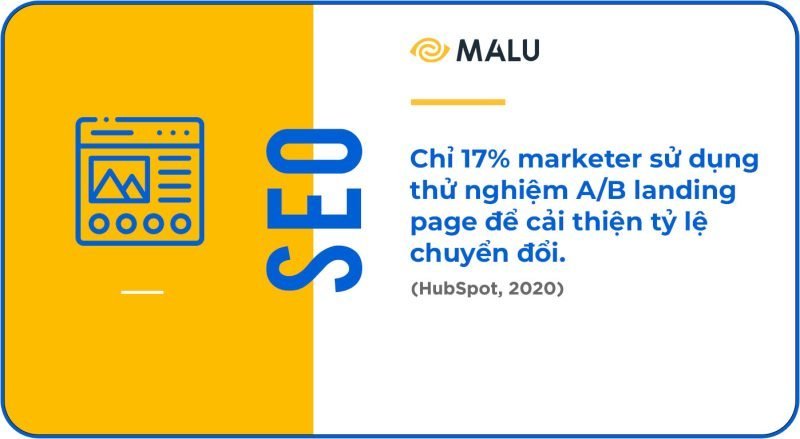
Did you know, according to HubSpot, only 64% of marketers invest time in search engine optimization? This means that 36% of marketers are not doing any search optimization at all!
We estimate that around 60% are uncertain about how to optimize their environment for brands doing SEO. Disagree? Think about this, only 10 brands can be on the first page of Google for a chosen keyword.
SEO is complex and a science and will include main topics, subtopics, and pillar content systems.
Now, if you’re reading this and you don’t know what a pillar page is, click the hyperlink to see a few examples.
- Only 17% of marketers use landing page A/B testing to improve conversion rates. (HubSpot)
- Over 50% of marketers identify keyword ranking and organic traffic as the top ways to measure the success of their SEO strategy. (HubSpot)
- The first five seconds of page load time have the highest impact on conversion rates. Website conversion rates drop by an average of 4.42% with every extra second of load time. (portent)
- 69% of marketing professionals invest in SEO. (HubSpot)
- In a survey conducted by Databox, 70% of respondents said that SEO is better than PPC for generating sales. (Databox)
- Landing pages, the least common form of registration, have the highest conversion rates (23%). On the other hand, pop-ups, the most common sign-up form, have the second lowest conversion rate (3%). (Global)
- Global B2C e-commerce sales are expected to reach $4.5 trillion by 2021. ( Shopify Plus )
- 51% of shoppers surveyed said they use Google to research a purchase they plan to make online. ( Think with Google )
- According to a 2019 study, search traffic generated 65% of all e-commerce sessions, 33% was generated through organic search, and 32% was generated through paid search. (Statista)
- 59% of shoppers surveyed say being able to shop on a mobile device is important when deciding which brand or retailer to buy from. (Think with Google)
- Over a two-year period, mobile searches for “___ near me today/tonight” increased by more than 900%. (Think with Google)
- 60% of smartphone users have contacted a business directly using search results, such as a “click to call” option. (Think with Google)
- 46% of shoppers surveyed confirm their inventory online before going to the store. (Think with Google)
- 70% of shoppers surveyed said the ability to shop in person/in-store is important when deciding which brand or retailer to buy from. (Think with Google)
- As of 2019, mobile devices, excluding tablets, generated about half of website traffic globally.
(Statistical) - Mobile web traffic has consistently accounted for about half of global web traffic since early 2017. (Statista)
- 87% of internet users in the US use more than one device when going online. (Think with Google)
- 60% of smartphone users have contacted a business directly using search results (e.g. “click to call” option). (Think with Google)
- Nearly 25% of companies invest in mobile optimization as a top SEO tactic. (HubSpot)
- 39% of smartphone users are more likely to browse or shop a company or brand’s mobile app because it’s easier or faster to make a purchase. (Think with Google)
- About 64% of marketers actively invest time in search engine optimization (SEO). (HubSpot)
- Text will always be the foundation of search, so making sure the text around your site’s content is descriptive will help them rank well in search. (HubSpot)
- In 2020, the SEO report will tie initiatives to results, such as showing the impact of SEO on broader business goals. (HubSpot)
- To improve website performance, the top technical SEO tactic used by marketers is to optimize for mobile performance. (HubSpot)
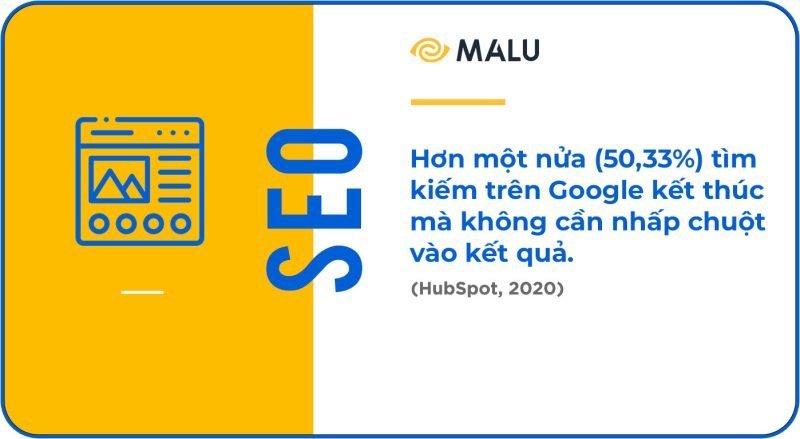
- More than half (50.33%) of searches on Google now end without a click on a result. (Jumping over Sparktoro)
- As of June 2019, 94% of Internet searches occur on a Google property. (Jumping over Sparktoro)
- Google uses 810 unique SERP features. Among them, 161 were found on more than 0.2% of keywords. (seoClarity)
- 65% of people aged 25-49 talk to their voice-enabled devices at least once a day. (PWC)
- OC&C estimates that $40 billion in the US and $5 billion in the UK will be spent on voice commerce by 2022. (OC&C Strategy Consultants)
- Mobile optimization has been automatically rated effective by 64% of marketers. (HubSpot)
4. Lead Generation – Lead Generation
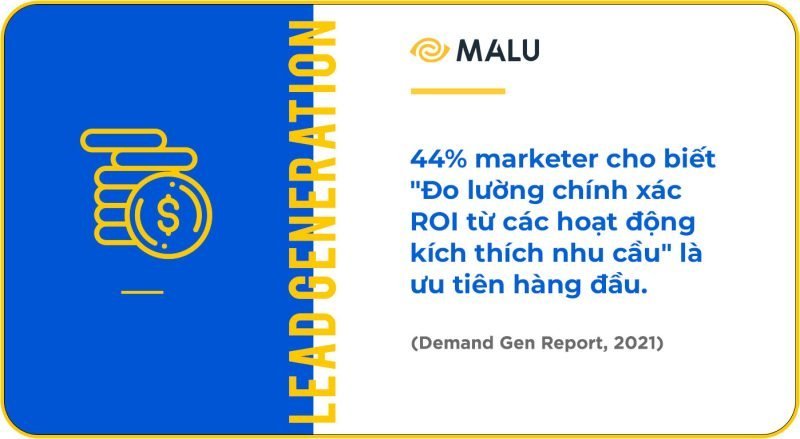
As you will note below in one of the stats, the number one priority for marketers reported in 2020 is lead generation. We do not predict that this will change in 2021.
But this is something to think about. Over 60% of marketers say their CAC (customer acquisition cost) has increased. But only 17% of landing pages A/B test???
According to “Triggers,” placement and targeting are the top 2 tactics advertisers are currently using to drive more demand.
Marketers who used data to understand their customer base, demographics, and pain points held an advantage instead of assuming they knew them and building campaigns in that context.
Putting the right ad in front of the right audience at the right time delivers the right results — every time.
I would almost say that targeting and ad placement are more important than advertising. However, I do not want to emphasize the importance of creativity. However, using data to define your audience and their needs takes precedence before creating an ad.
In 2021, never assume what your audience is looking for; Build your case through data.
- 44% of marketers say “Better measure the ROI of our demand generation initiatives” is their top priority for 2021. (Demand Gen Report)
- More than half (53%) of marketers say webinars are the top format in the highest quality lead generation funnel. (Demand Gen Report)
- The top priority for marketers is to generate leads. (HubSpot)
- 53% of marketers say email is the most effective channel for lead generation at an early stage. (Demand Gen Report)
- In 2021, 78% of marketers say their demand generation budget will increase or stay the same. (Work)
- 28% of marketers say using additional account-level fields improves their lead scores. (Activate)
- Ad placement and audience targeting are the top ways advertisers drive more demand. (Activate)
- More than 60% of marketers say their CAC has increased in the past three years. (HubSpot)
- 49% of companies report that increasing customer base is their primary goal. ( Ascend2 )
- Just over 75% of marketers are reporting on how their campaigns directly impact revenue. (Hubspot)
- Only 35% of marketers say understanding the ROI of their campaigns is “Very Important” or “Extremely Important”. (Hubspot)
- 52% of marketers are currently using attribution reports. (Hubspot)
- 91% of marketers are “somewhat confident” or “very confident” that they are investing in revenue-impacting programs.(Hubspot)
- 15% of marketers measure the success of their content programs by the number of leads they generate. (Hubspot)

- 67% of companies use lead generation as the sole metric to determine the success of their content. (SEMrush)
- 75% of marketers use their reports to show how campaigns are directly impacting revenue. (HubSpot)
- Automation continues to increase with over 76% of companies using it in some way (HubSpot)
- Fewer than 25% of marketers fail to report how campaigns are affecting revenue. (HubSpot)
- Google Analytics is the leading SEO tool used by marketers. (HubSpot)
- Email automation campaigns are among the top three tactics used by email marketers to improve performance. (HubSpot)
- 92% of marketing agencies are investing more time, resources, and budget into marketing automation integration. (MarketingProfs)
- Of those who are automating marketing, 23% are automating the delivery of their content. (HubSpot)
- 20% of marketers are using automated email marketing campaigns. (HubSpot)
- 68% of businesses use automation in some way. (HubSpot)
- 92% of B2B marketers now have an ABM program, and 68% of them use automation. (Salesforce)
5. Email advertising – Email Marketing
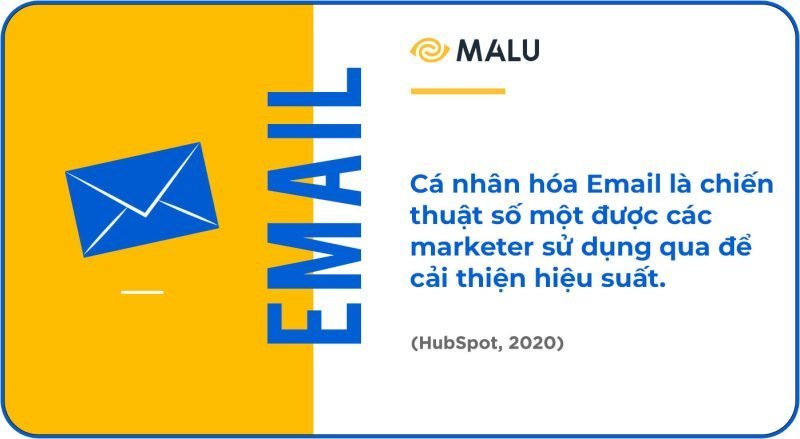
Since 2013 when I first started Digital Stand, I’ve heard two main calls: social media will never achieve ROI. Finally, when it was enough, I started hearing that email was dead.
According to Campaign Monitor, email marketing has the highest return on investment for small businesses. What’s interesting, however, is that marketers who use A/B testing generate 37% more returns than those who don’t.
With the number of email users expected to grow to 4.48 billion by 2024 (Statista), email marketing and EDM have a long way to go. However, you should consider making your EDM and email as contextual as possible. You can do this by including video, segment your audience, and personalize to the greatest extent possible.
- 35% of marketers choose to send three to five emails per week to their customers. (HubSpot)
- Promotional emails are the most common type of email that marketers are investing in. (HubSpot)
- A study including 1,000 business owners said email marketing is the second most effective means of building brand awareness. (Campaign Monitor)
- The industry average email click-through rate is 2.13%. (GetResponse)
- Interests have the highest click-through rate, at 5.01% (Mailchimp)
- Friday is typically the day with the highest click-through rate potential, at 2.7%. (Campaign Monitor)
- At 30.5% in 2020, government email dominates email open rates globally. (Campaign Monitor)
- More than 20% of marketers surveyed say email design is improving their email engagement. (HubSpot)
- Audience segmentation is currently one of the top 3 tactics used by marketers. (HubSpot)
- Email subject lines have an average of 43.85 characters. (AWeber)
- Of the 1,000 emails analyzed, only 6.9% incorporated emojis in the subject line. (AWeber)
- Message personalization is the number one tactic used by email marketers to improve performance. (Hubspot, 2020)

- 4.1 billion people currently use email (more than half of the world’s population)
- Companies that do A/B testing for every email get 37% more profit from email marketing than brands that never do A/B testing. (Litmus)
- 64% of small businesses say their email content is effective or very effective. (AWeber)
- 45% of small businesses with effective or very effective email copy have an average open rate of 26% or higher. (AWeber)
- Marketers using segmented campaigns saw up to 760% increase in revenue. (Campaign Monitor)
- Nearly 30% of marketers surveyed use audience segmentation tactics to improve email engagement. (HubSpot)
- About 80% of marketers have reported an increase in email engagement in the past 12 months. (HubSpot)
- Apple iPhone and Gmail are the most popular clients for opening mobile email. (Campaign Monitor)
- Mobile phones accounted for 42% of all emails opened in 2019. (Litmus)
- In 2019, the number of global email users reached 3.9 billion. (Statista)
- Mobile readers opening an email a second time from their computer are 65% more likely to click through.
(Campaign Monitor) - The number of global email users will grow to 4.48 billion users by 2024. (Statista)
- The average email deliverability across all email service providers is 79.6%. (EmailToolTester)
- Mobile-friendly email is the second most used tactic for email marketers to improve their performance. (Hubspot, 2020)
- Nearly 25% of people who open email on mobile will reopen: 70% will stick with their mobile device and 30% will move elsewhere. (Campaign Monitor)
- From a study of 1,000 small business owners, email marketing ranked as the second most effective means of building brand awareness. (Campaign Monitor)
- Email marketing has the highest return on investment for small businesses. ( Campaign Monitor )
- Tuesday see the highest email open and unsubscribe rates (Campaign Monitor)
- The number of global e-mail users is set to grow to 4.48 billion users by 2024. (Statista)
- Of all emails opened on mobile devices, 66% are read in more than eight seconds. (Litmus)
- 40% of people 18 and under will always open email on their mobile device first. (Campaign Monitor)
- 40% of consumers say they have at least 50 unread emails in their inbox. (Sinch)
6. Social Media – Social Media Marketing
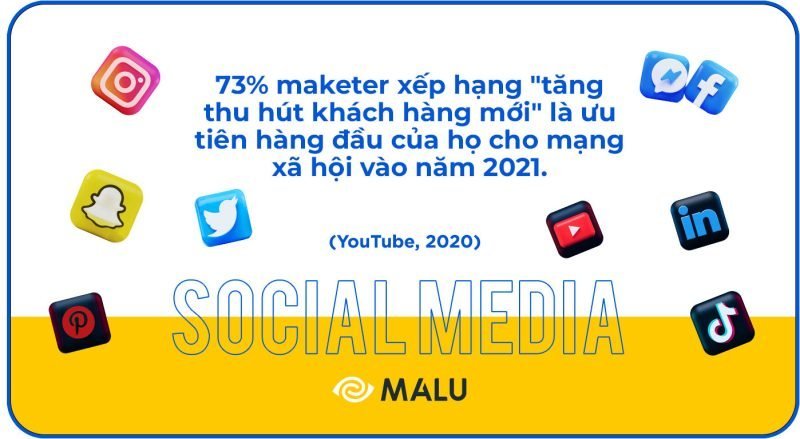
In 2020, the number of social media users in the world has crossed the four billion mark! With the average user spending about 2.2 hours on a social media platform or platform of their choice.
According to Statista’s January 2021 report, Facebook is still leading with 2.7 billion monthly users. Followed by YouTube, WhatsApp, Facebook Messenger and Instagram.
As a marketer, if I were to look at that data, then for social media, the Facebook platform suite could present an important opportunity for you.
Let us break down the stats on the following platforms for you.
Social media
- Facebook, Instagram and Twitter lead the pack as the most popular social media platforms used by marketers.
(HubSpot) - Most marketers agree that Facebook (Meta) is the most popular social media platform of all ages. (HubSpot)
- In a 2019 survey, 15% of video marketers said they plan to include TikTok in their 2020 video marketing strategy.(Wyzowl)
- Social listening is the number one tactic used by marketers. (HubSpot)
- Increased exposure is the most commonly cited advantage of using social media for marketing purposes among global industry professionals. (Statista)
- Improved traffic, lead generation, and growing fan loyalty are among the top reasons marketers see the value of using social media in campaigns. their. (Statista)
- The most common publishing cadence for social media marketers is three to four times per week. (HubSpot)
- More than half of businesses (60%) are planning to increase their Instagram budget, and nearly half are planning to do the same for Facebook, YouTube and LinkedIn. (Hootsuite)
- By 2023, the number of social media users in the US is expected to reach 257.4 million. (Statista)
- 73% of all marketers rank “increasing new customers” as their top result for social in 2021.
(Hootsuite) - 66% of marketers say social listening has added value to their organization in the past 12 months (Hootsuite)
- 45% of marketers say “driving conversions” is a key business outcome for social in 2021 ( Hootsuite )
- By 2023, the number of social media users in the US is expected to reach 257.4 million. (Statista)
- The number of global social network users is expected to reach nearly 3.43 billion by 2023. (Statista)
- Statista predicts that nearly 800 million Chinese internet users will access the social network by 2023, up from 673.5 million social media users in 2018. (Statista)
- In 2018, social media ad spend was approximately US$27 billion (including paid social, games, and app ads).
(Statista) - 15% of video marketers plan to include 360-degree video in their 2020 video marketing strategy.
(Wyzowl) - People are twice as likely to share video content with their friends than with any other type of content.
(Wyzowl) - In 2019, 59% of non-video marketers surveyed said they expect to start using video as a marketing tool by 2020.
(Wyzowl)
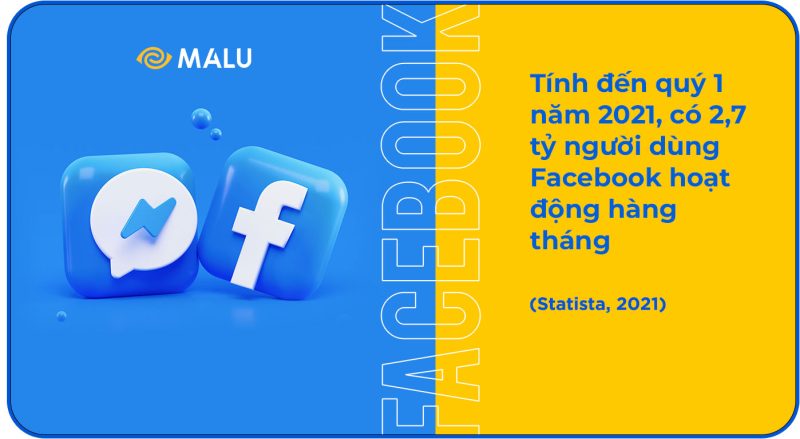
- As of Q1 2021, there are 2.7 billion monthly active Facebook users. (Statista)
- There are over 280 million Facebook users in India making India the top country in terms of audience size on Facebook. (Statista)
- Facebook is the primary content distribution channel for marketers today. (HubSpot)
- More than 80 million small businesses use Facebook’s free business tools. (Facebook)
- Facebook is the primary content distribution channel for marketers today. (HubSpot)
- More than 1.6 billion people around the world are connected to a small business on Facebook. ( Facebook )
- 18% of marketers are currently using Facebook Groups. (HubSpot)
- About 43% of adults in the US get their news from Facebook. ( Pew Research Center )
- As of April 2020, more than 98% of Facebook’s active user accounts worldwide accessed the social network via any type of mobile phone. (Statista)
- 79% of video marketers use Facebook as their video marketing channel. (Wyzowl)
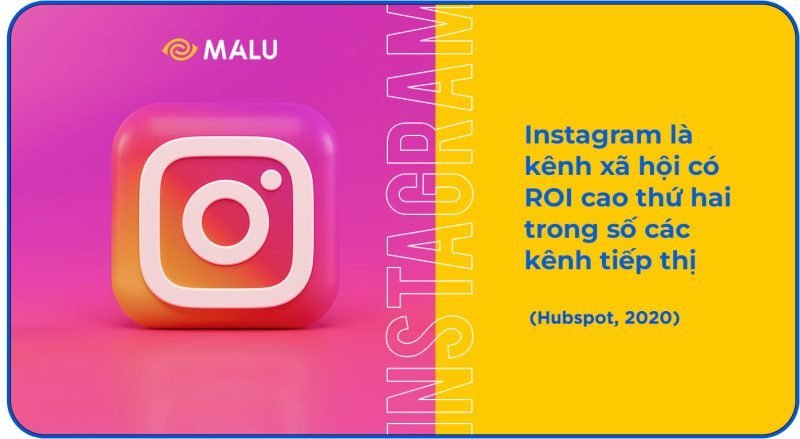
- eMarketer predicts Instagram will reach 1.1 billion users by 2022 (eMarketer)
- As of April 2020, 35% of the global Instagram audience is between the ages of 25 and 34. (Statista)
- Instagram is the second highest ROI social channel among marketers. (HubSpot)
- More than two-thirds of the total Instagram audience is 34 years old or younger, as of April 2020. (Statista)
- As of 2019, 69% of social media marketers said they would increase their use of Instagram in the future. (Statista)
- IGTV, an app for long, vertical videos on Instagram, allows users to share live video content between 15 and 16 minutes long. (Instagram)
- 28% of video marketers plan to include InstagramTV in their 2020 video marketing strategy. (Wyzowl)
- A 2019 survey found that 25% of teenagers in the United States use Instagram the most of all social networks. (Statista)
- Women make up 56.4% of Instagram users in the US as of February 2020. (Statista)
- By 2023, Instagram is predicted to reach 120.3 million monthly active users in the US, up from 107.2 million users in 2019. (Statista)
- The United States is the country with the most Instagram users, reaching 120 million users as of April 2020. India ranks second and Brazil in third. (Statista, 2020)
- As of March 2020, Cristiano Ronaldo is the most followed person on Instagram with over 209 million followers. (Statista, 2020)
- In 2018, there were 3.7 million brand-sponsored influencer posts on social platforms (Statista, 2019)
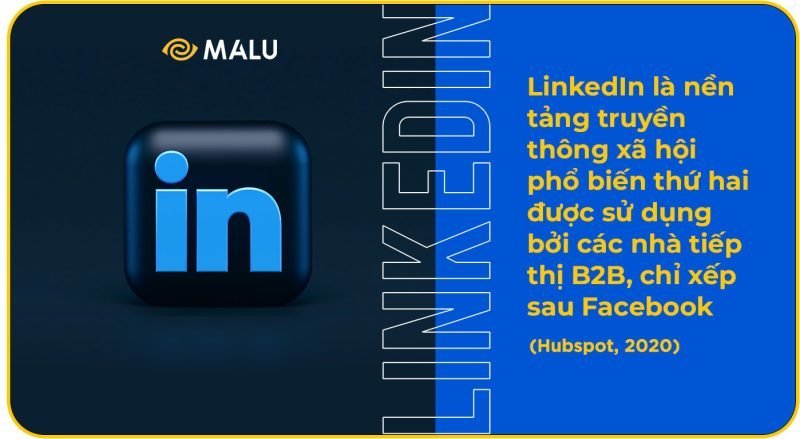
- LinkedIn currently has more than 774 million users. (Statista, 2021)
- According to a 2020 survey, 43% of LinkedIn’s audience is female and 57% male.
(Statista) - In 2019, LinkedIn InMail was the third most used candidate outreach channel globally, after email and phone/message. (Statista)
- In 2019, over 87% of video marketers on LinkedIn described the platform as an effective video marketing channel. (Wyzowl)
- 66% of video marketers in a 2019 survey said they would include LinkedIn in their 2020 video marketing strategy. (Wyzowl)
- LinkedIn is the second most popular social media platform used by B2B marketers , behind only Facebook. (Statista, 2019)

- Pinterest now has 459 million users globally (Pinterest 2021)
- As of Q1 2020, Pinterest has 367 million monthly active users worldwide. (Statista)
- The number of Pinterest users in the US is expected to reach 90.1 million. (Statista)
- In a survey, 25% of social media marketers responding at B2B companies said they used Pinterest to market their business. (Statista)
- In February 2017, a total of 250 million searches were performed using Pinterest Lens, while in February 2018, there was a 140% increase, for a total of 600 million visual searches. (Statista)
- 85% of users bought something based on Pins they saw from brands (Pinterest)
- Women make up about 60% of all Pinterest users (Pinterest 2021)
Snapchat
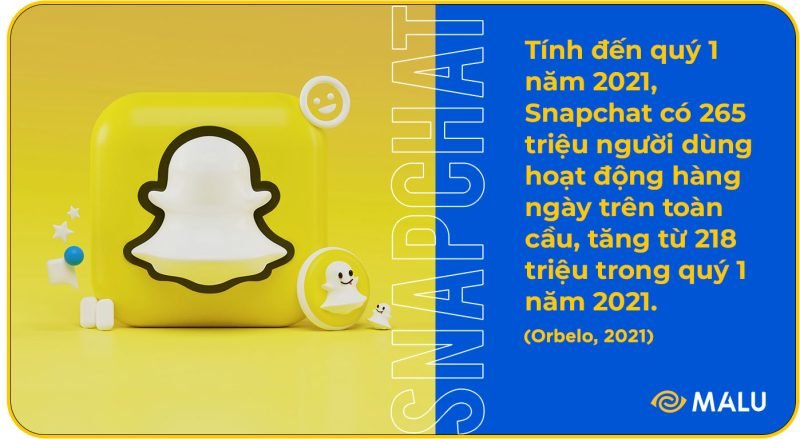
- Of Snapchat’s $1.79 billion in global revenue in 2019, $1.07 billion came from North America. (Statista)
- In 2019, Snapchat was the most important social network for 44% of US teens. (Statista)
- As of Q1 2021, Snapchat has 265 million daily active users globally, up from 218 million in Q1 2021. (Orbelo)
- In the US, Snapchat has an estimated 46 million monthly active users. (Statista)
- As of Q3 2019, 53% of US internet users between the ages of 15 and 25 use Snapchat. (Statista)
- Snapchat users now spend more than 30 minutes a day on the platform (Snapchat)
- Snapchat offers six different ad formats on the platform. (Statista)
- In 2018, 39.9% of social media users in the US used Snapchat for communication, but this percentage is expected to drop to 35.3% by 2023. (Statista)
- As of April 2020, the United States has the largest Snapchat user base in the world, with nearly 103 million users. India comes in at second place with a Snapchat audience of 28.2 million users.
(Statista) - The majority of users’ Snapchat visits are generated via mobile phones. (Statista)
- According to a survey in Q3 2019, 48% of Snapchat users in the US shared content to the social platform on a weekly basis. (Statista)
TikTok

- In 2019, TikTok was the third most downloaded non-gaming app in the world with over 1.5 billion downloads. (Statista)
- In 2019, TikTok had about 37.2 million users in the US (Statista)
- Nearly a quarter of online adults in the United States say they have watched videos posted on TikTok. (Statista)
- ByteDance ‘s TikTok social video app has been downloaded more than 2 billion times globally on the App Store and Google Play (Sensor Tower)
YouTube
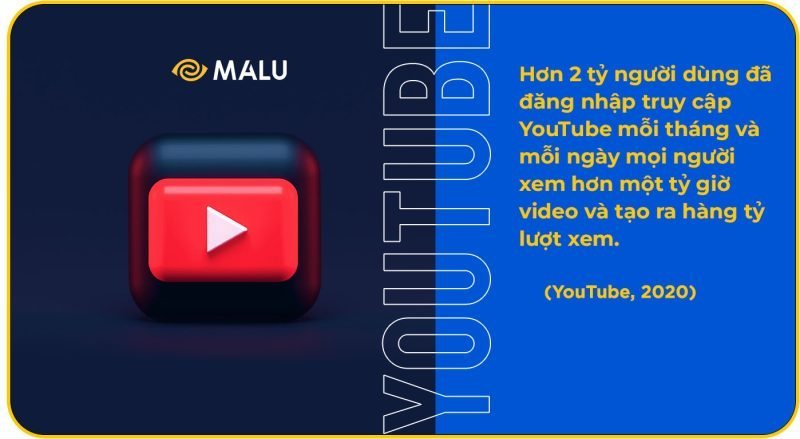
- YouTube is the second most visited platform in the world (HubSpot)
- YouTube was the social media platform with the largest reach for US Gen Z and Millennial internet users in 2019, regardless of gender. (Statista)
- 83% of video marketers who have used YouTube say they have been successful. (Wyzowl)
- Viewers say they’re 2x more likely to buy something they’ve watched on YouTube. (Google)
- YouTube has become the #1 platform that social media marketers build communities on (YouTube)
- Using Google Ads, Schmidt Naturals saw a 48% increase in brand awareness for its vegan products on YouTube. (Google)
- Purple has seen a 34.6% increase in brand consideration for their mattress orders using Google Ads audience targeting on YouTube. (Google)
- Over 2 billion logged in users visit YouTube every month, and every day people watch over a billion hours of video and generate billions of views. (YouTube)
- YouTube alone, on mobile devices, reaches more people in the 18- to 34-year-old audience in the United States than any other television network. (YouTube)
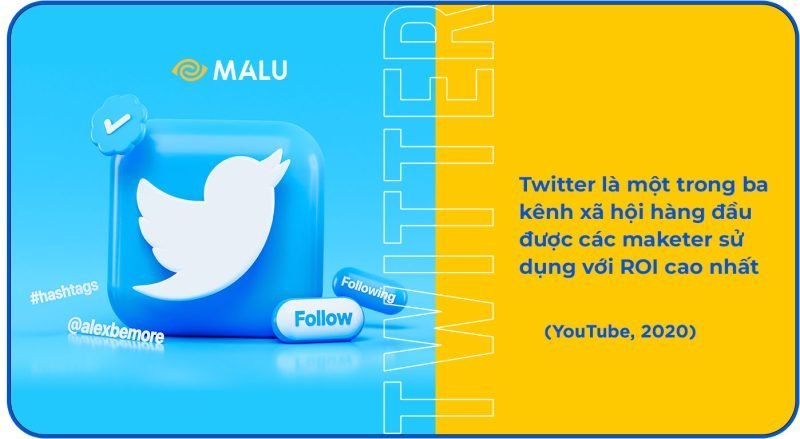
- Twitter ranks 12th in the most visited websites in the world (SEMrush)
- The number of global daily active users on Twitter is 166 million. (Statista)
- Twitter is one of the top three social channels used by marketers with the highest ROI. (Statista)
- Twitter’s annual revenue reached nearly $3.46 billion in 2019. (Statista)
- Globally, the US is the country with the most Twitter users, followed by Japan and Russia. (Statista)
- Twitter generated 87% of revenue through advertising services in 2019. (Statista)
- The largest US Twitter audience by age group, as of September 2018, is between the ages of 25-34 and 55-64. (Statista)
- As of January 2020, 43.8% of Twitter audiences in the US are female and 56.2% are male. (Statista)
- 38% of video marketers plan to include Twitter in their 2020 video marketing strategy. (Wyzowl)
7. Video Marketing – Video Marketing
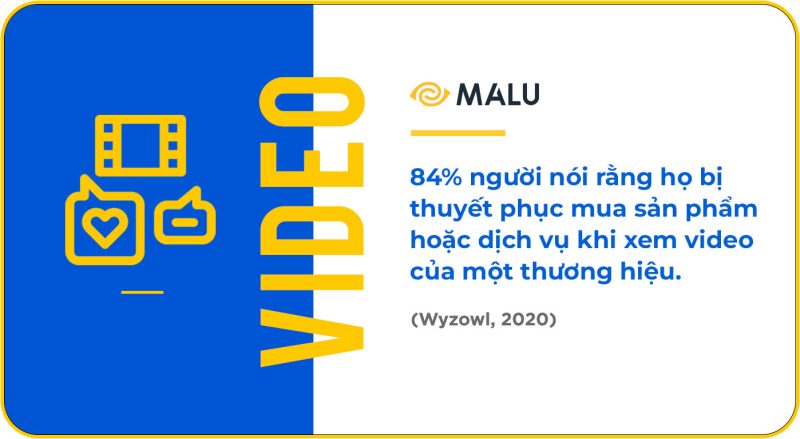
64% of businesses now claim that in the past 12 months a Facebook video led to a new customer.
Another 84% of people now say they were persuaded to buy a product or service by watching a brand’s video.
There’s no question that video marketing is on the rise; in terms of content, brands are starting to publish more videos than blog posts. The remarkable aspect of video marketing is that you can get a deeper sense of the company that you never had before.
But video marketing and the benefits associated with this new medium not only helped generate leads and new customers, but also had a significant impact on service and employee training.
Another 95% of marketers say they gain a better understanding of their products based on using videos to explain their products. Instead, if you are hesitant to use video to promote your business, think about using video as a service tool. 43% of marketers now say video has reduced the number of support calls they receive.
Video can not only impact revenue generation, but it can also have a significant impact on cost reduction. It is making this form of communication unparalleled when it comes to customer acquisition and customer education.
- 75% of shoppers said they used a Google product (Search, Maps, YouTube) in the past week to support their shopping. (Think with Google)
- 64% of businesses said that in the past 12 months, a video on Facebook led to a new customer. (Cartoon)
- 83% of video marketers say video has helped them generate leads. (Wyzowl)
- 84% of people say they are convinced to buy a product or service when watching a brand’s video.
(Wyzowl)
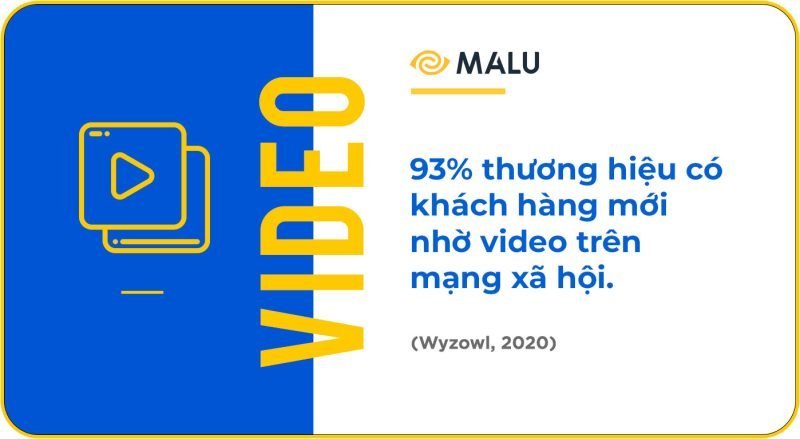
- 95% of video marketers say they feel they gain a better understanding of their product or service using video.
(Wyzowl) - 43% of video marketers say video has reduced the number of support calls they receive. (Wyzowl)
- 93% of brands gain new customers through social media videos. (Wyzowl)
- 96% of marketers have placed ad spend on video. (Wyzowl)
- In 2020, social video is among the four most popular types of video that marketers are investing in today.
(HubSpot) - The most common types of videos made by marketers are presentations (65%), followed by promotional (57%) and explanatory (47%). (Can bite)
- Video is the second most used type of content on social media used to increase audience engagement. (HubSpot)
- 88% of video marketers say they plan to use YouTube in 2020. (Wyzowl)
- Live video is the third most used social media marketing tactic. (HubSpot)
- In terms of YouTube’s most popular brand channels (ranked by video views), toy maker LEGO came out on top with 10.04 billion views in February 2020. (Statista)
- YouTube and Facebook are the most widely used platforms among video marketers — 85% and 79% respectively.
(Wyzowl) - Only 11% of video marketers said they used Snapchat as a video channel in 2020. (Wyzowl)
- People are 1.5 times more likely to watch daily videos on smartphones than on computers. (Facebook)
- 93% of brands gain new customers through social media videos. (Wyzowl)
- 92% of video marketers feel the level of noise and competition has increased in the past year. (Wyzowl)
- When people decide which YouTube videos to watch, it’s 3x more important to relate to their passion than whether the video has a famous actor, and 1.6x more important than whether it’s the video itself. high production quality or not.
(Think with Google) - 99% of people who use video for marketing say they will continue to use video in 2020. (Wyzowl)
- YouTube is the fourth most used social media platform by marketers (Facebook, Instagram and Twitter top the list).
(HubSpot) - 88% of video marketers report that video gives them a positive ROI. (Wyzowl)
- The average duration of the most trending videos of the year in 2019 was 9.5 times longer than in 2010.
(YouTube) - 75% of shoppers said they used a Google product (Search, Maps, YouTube) in the past week to support their shopping. (Think with Google)
summary
As Malu stated in the first statistic, tell a story! As a marketer or business leader, look at the data in those stats and determine its benefits. We have to wonder what the hidden message is.
Are there gaps in the market and are there opportunities to exploit those gaps? Is it through A/B testing landing pages or A/B testing EDM campaigns? Should we write articles longer than 3000 words? Should we ensure our targeting and ad placement are second to none by using data to determine their needs and impact creativity?
In both digital and offline advertising, you see 10,000 ads per day. Yes, that’s right, 10,000 ads per day! In a world that gets little attention as marketers and business leaders, we have a responsibility to use every strategy and tactic to get our message across.
Because what if we’re actually selling something that helps consumers and or business leaders solve real problems? It’s our responsibility to make sure we’re doing the best job we can to ensure that our message cuts through the noise.
As the stats show above, doing more of the above will improve the chances of your message being heard and you’ll be in the air. You are competing where others are not ready to compete and differentiate your brand with your efforts.




